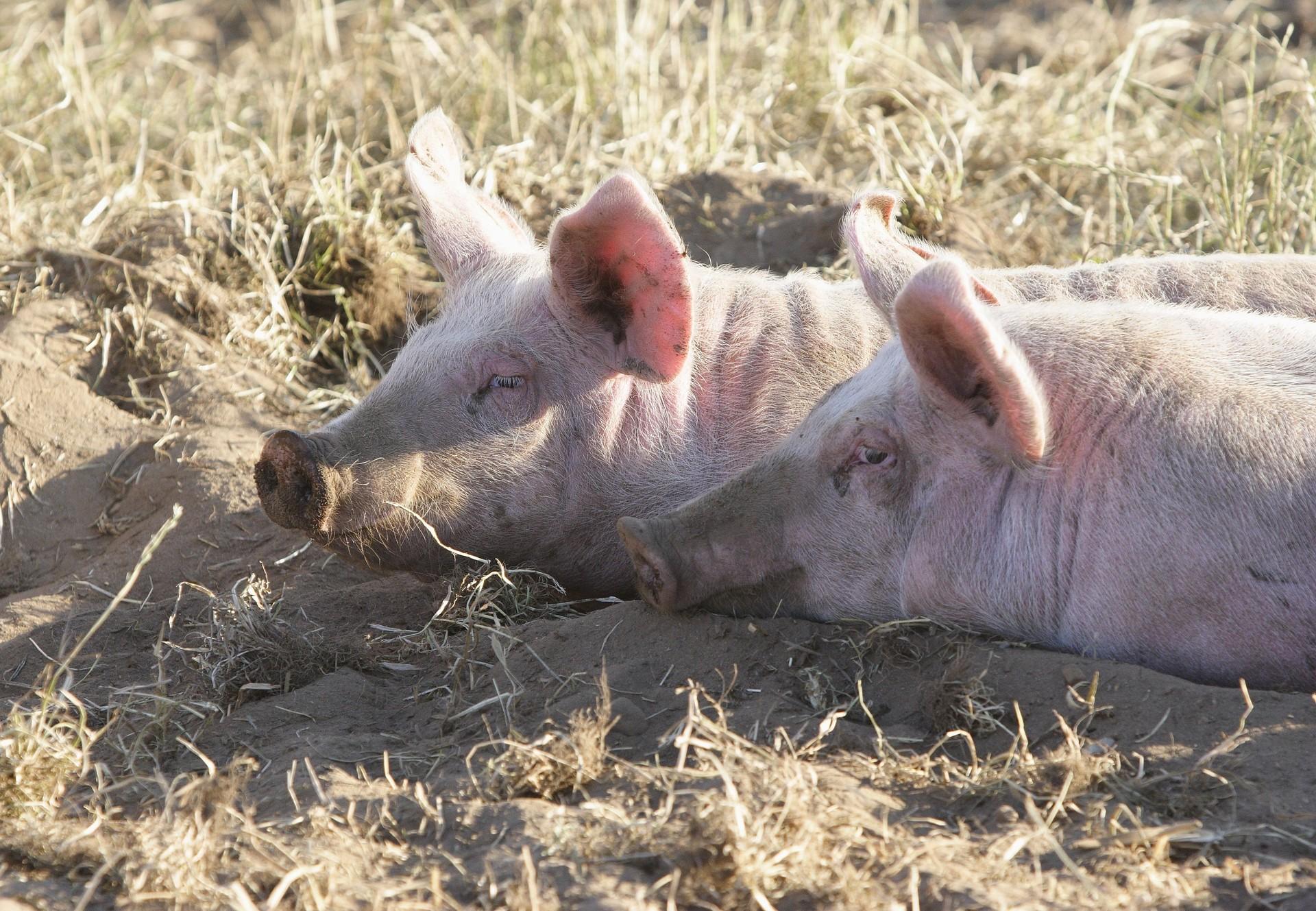
The Needs of Pigs
What do domesticated pigs really need to be healthy and happy?
Pig domestication probably began thousands of years ago. The approximately 150 existing breeds of the European domestic pig come mainly from the European wild boar and crosses with the East Asian pig, which British sailors brought to Europe in the 18th century. For centuries, the pigs were kept outside on pasture, forest or the street during the day and were brought to stables at night. Intensive husbandry did not appear until after the Second World War.
The natural life expectancy of pigs is up to twenty years, but at six months – the age of sexual maturity –180 kg heavy fattening pigs are usually slaughtered – and the breeding sows are slaughtered as soon as they no longer meet the expected performance, usually after a few years.
A pig's basic needs
Pigs have an organised social structure with a strict hierarchy and regular daily routines. Learn more about what a pig’s day would look like in nature. Usually, pigs live in groups of 20 to 30 animals, consisting of dams/sows and their offspring. After sexual maturity, the male animals leave the group and join in separate groups for a certain period in order to finally lead a lonely life. They only join the group during the mating season.
Contact and distance to other pigs
Except for older boars, pigs are highly social mammals who have a strong need to stay in contact with other conspecifics. Separating established groups and keeping young animals or sows isolated, causes severe stress to the animal, but both are a common practice in intensive pig farming systems.
Most of the activities are carried out by pigs while in the group, or at least close to the group. Due to the hierarchy, pigs also have situations or activities in which they avoid each other or at least keep a certain minimum distance. Failure to keep the distance, for example when eating, can lead to aggressive behaviour. Such conflicts occur very often in extremely cramped conditions of intensive husbandry because the animals cannot avoid each other. Injuries and a permanently elevated level of stress often occur. Because groups are always reassembled, there is never any peace: newcomers or the 'freeing' of hierarchy positions continuously result in new rank battles.
Need for cleanliness and personal hygiene
The image of a pig lying in faeces or even wallowing in it does not in any way correspond to the natural disposition of the animal. On the contrary: pigs that are forced to live permanently in their own excrement in intensive systems suffer severely from it.
Since pigs cannot sweat, they regulate their body temperature by bathing, rolling, or wallowing in mud. Pigs under intensive husbandry conditions have no way of carrying out these innate behaviours in a manner appropriate to the species. Out of sheer necessity, they try to cool themselves down by splashing drinking water, or by washing in their own faeces and urine.
The combination of a too warm stable climate and an increased, faeces-related ammonia content in the air they breathe, also poses strong health risks for the pigs. Cardiovascular issues and respiratory diseases, such as pneumonia, are not uncommon.
Furthermore, pigs are very dependent on suitable scratching options, as we bred their body form into length, so they are not so flexible anymore as grown-ups. Scrubbing/scratching removes mud, faeces, and parasites. Under intensive husbandry conditions, there are usually no scratching options, or they are inadequate. Permanent itching and the non-satisfaction of innate needs, such as wallowing, lead to a high level of frustration, which often results in increased aggressiveness towards their pen partners.
Indicators of well-being
The appearance or absence of certain behaviours can provide the trained eye with much information about the animal’s welfare. Most importantly, it shows the extent to which an existing form of husbandry satisfies the basic needs of an animal and can be described as appropriate to the species and behaviour. Distinct foraging or play behaviour, for example, can be a good indicator of positive conditions. Piglets, in particular, have a pronounced exploration instinct, which they can perform extensively in natural, free-range husbandry systems. In intensive care, there is neither space nor adequate employment/enrichment opportunities.
The category 'comfort behaviour' means actions that can be assigned to the area of "body care". On the other hand, this also includes behaviours that represent comfort, tolerance, sociability, and relaxation (e.g. yawning, stretching, nesting). However, caution is required when assessing comfort behaviour. Some elements, such as yawning, stretching or scratching, can also be behavioural displacements – that come out of a conflict or an adverse circumstance. It is always important to consider the entire behavioural context when assessing the animal. Stereotypies, self-mutilation, apathetic or exaggeratedly aggressive behaviour up to cannibalism are signs of poor stable conditions.
Stereotypical behaviour can be observed very often in pigs in intensive housing. These include, for example, sham chewing with foamy mouth, tongue rolling and bar- or trough- biting. Apathy and excessive aggressiveness due to constant stress and lack of retreat opportunities also occur very often.




